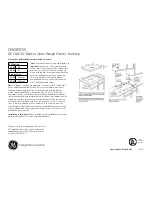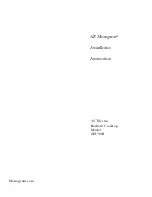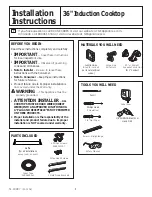
IT 14
Selezione e uso del bruciatore:
Utilizzare il bruciatore semirapido, rapido o wok per friggere, soffriggere o riscaldare grandi
■
quantità di cibo.
Il bruciatore ausiliario è adatto per la preparazione di salse e per le bolliture a fuoco lento.
■
Impostato al massimo, questo bruciatore è suf
fi
cientemente potente per ottenere una
cottura completa del cibo.
I bruciatori normali possono essere utilizzati per tutti gli altri piatti.
■
Bruciatore wok (GN792 e GN952)
Il bruciatore wok consente di raggiungere temperature molto alte. A questo scopo, è impor-
tante:
tagliare gli ingredienti a strisce, fette o pezzi prima di cucinarli.
■
utilizzare olio di buona qualità per la frittura, come ad esempio olio d’oliva, di mais, di
■
girasole o di arachidi. Una piccola quantità è suf
fi
ciente.
Il burro e la margarina invece brucerebbero a causa del calore intenso.
collocare per primi nella pentola gli alimenti con tempi di cottura più lunghi, di modo che al
■
termine della cottura tutti gli ingredienti siano cotti a puntino.
Il coperchio del bruciatore wok è in ottone. Di norma, mentre si utilizza il bruciatore wok, il
suo colore cambia per via delle alte temperature.
Uso del supporto ausiliario del bruciatore wok (GN792 e GN952)
Il supporto ausiliario fornito con il bruciatore wok assicura una maggiore stabilità quando si
utilizza una base di forma rotonda.
Si raccomanda di posizionare sempre il supporto del
wok con un angolo di 45 gradi, come mostra
l’illustrazione. Se posizionato erroneamente, il
supporto ausiliario diventerebbe troppo caldo e
potrebbe danneggiarsi.
Sbagliato
Giusto
Cucinare con il coperchio sulla pentola. In questo modo, si risparmierà
fi
no al 50% di
■
energia.
Utilizzare pentole con la base piatta, pulita e asciutta. Le pentole con la base piatta
■
sono più stabili, mentre una base pulita consente di trasferire più ef
fi
cacemente il calore.
Il bruciatore
3.2 Uso dell’apparecchio
GB 19
Take off the pan supports.
■
Clean them and the control knobs with a damp cloth, washing-up liquid and warm
■
water. Stubborn stains are best soaked beforehand.
Finally dry everything with a clean soft cloth.
■
Pan support, control knobs
Regularly wipe over the top plate using a soft cloth that has been dampened in warm
■
water to which a dash of washing-up liquid has been added.
Dry the top plate thoroughly after cleaning.
■
Thoroughly remove salty foods or liquids from the hob as soon as possible to avoid
■
the risk of corrosion.
Stainless steel parts of the appliance may become discoloured over time. This is
■
normal because of the high temperatures. Clean these parts with a product that is
suitable for stainless steel each time the appliance is used.
Top plate
Stubborn stains on stainless steel (spillage wells)
In particular spilled red cabbage, red beetroot, soy sauce, rhubarb and other foodstuffs with a
high sugar content and acidic liquids can discolour the surface. To remove stubborn stains
from stainless steel, use a cleansing agent specially formulated for stainless steel and always
clean in the direction of the structure of the steel in order to avoid shiny spots. (Any resulting
damage is not covered by the warranty!)
If the stains cannot be removed using the method described above, clean the hob with oven
and grill cleaner. Bear in mind, however, that you will have to clean the entire spillage well in
order to avoid differences in colour. You must also treat the spillage well afterwards with a
polish or maintenance product for stainless steel. It is normal for the surface to discolour
somewhat during the product’s lifetime.
Keradur
®
burner bases
The burner bases have a unique Keradur
®
surface coating. The special dirt-repelling lacquer
has a ceramic
fi
lling that makes cleaning easier and substantially improves the durability of
the burners. The burner bases are best cleaned with a mild cleaning product and a soft cloth.
3.6 Cleaning and maintenance













































